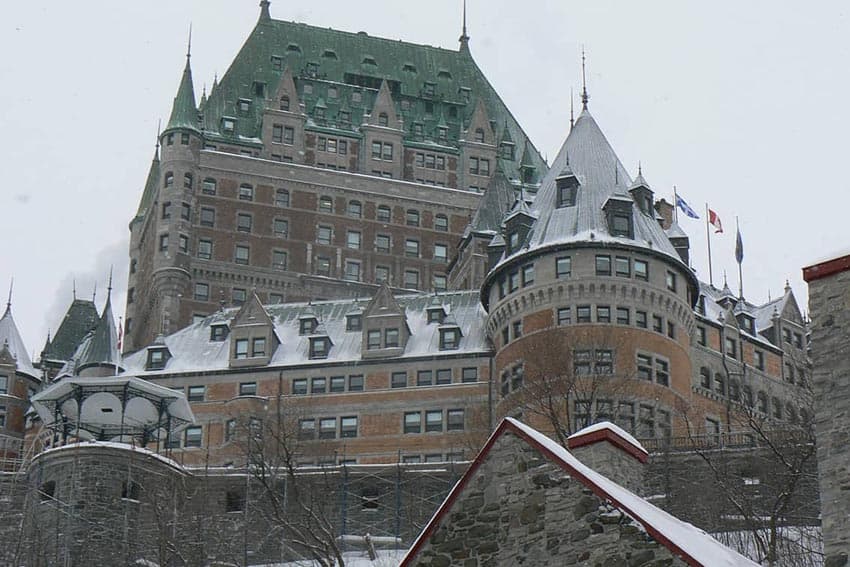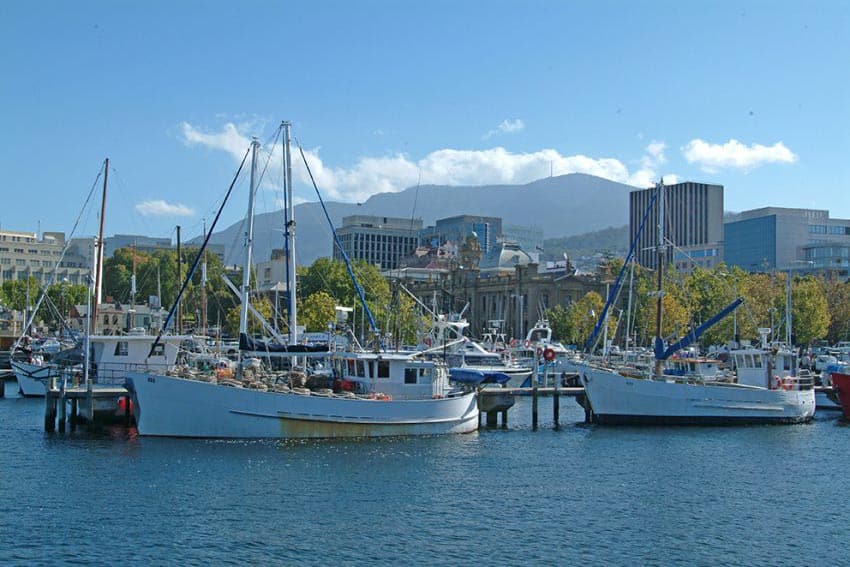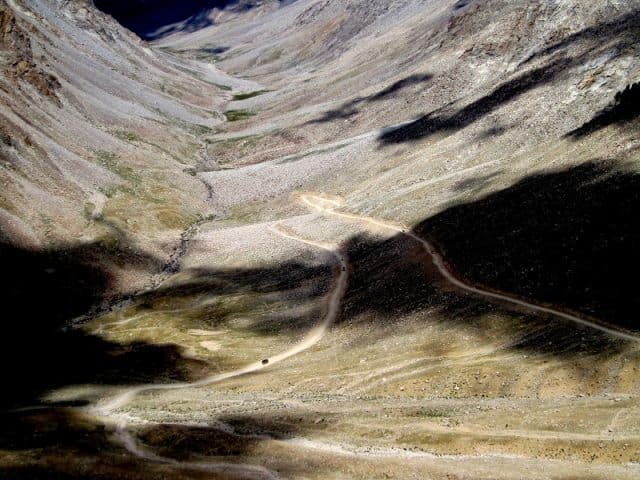
Ladakh, India Surrounded by Tibet and Pakistan
By Ravi J. Deka
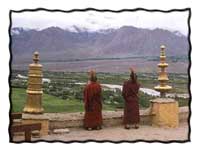
One of the first thing that strikes you when entering the territory of Ladakh is the lush greenery of the valleys contrasting wildly with the surrounding red and brown barren mountains and the unearthly blue of the skies above.
Ladakh is a land of caramel mountain ranges, rocky crags, towering snowy peaks, sandy plains and lush green fields lined by willows, dotted with whitewashed chortens and adobe brick houses, giant mountaintop monasteries, and ever-fluttering multicolored prayer flags.
Flanked by Tibet and Pakistan, the erstwhile kingdom of Western Tibet–now India’s northernmost province, Ladakh–is spread over a mountainous terrain averaging of an average altitude of 3500m above the mean sea level. A part of the State of Jammu and Kashmir, it was opened to tourists in the mid-70s and since then, thousands of people from around the world have thronged to this bastion of Himalayan Buddhism. And yet, it is still far less touristed than Nepal.
The early history of the region is deeply interconnected with that of Tibet. An independent kingdom ruled by the Thi dynasty from the 10th century AD, it was the 16th century King Soyang Namgyal who united the entire region and consolidated a part of western Tibet into his kingdom, making Leh his capital.
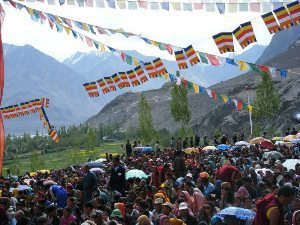
Crisscrossed by the river Indus, Ladakh comprises of a number of valleys separated by tall mountain ranges. Though extremely arid, most of the inhabited valley floors are cultivated using an indigenous system of irrigation where streams are dammed and split into numerous channels covering a large area; an age-old system of water management that ensures that each field gets its measure of water.
Along with the Ladakhis, who are originally of Tibetan descent, the area is also populated by ethnic groups like the Baltis and Dards, as well as the migrant Kashmiris. Mahayana Buddhism is the predominant religion here, though about 40 % of the population is Muslim.
Leh, at an elevation of 3417m or 11720 ft., is the largest town and the capital of Ladakh and an ancient trading post of the Central Asian silk route.
ATTRACTIONS
Monasteries
Ladakh has the largest concentration of Himalayan Buddhist monasteries, or gompas, outside Tibet, and possibly the same applies to chortens or stupas (dome or diamond-shaped edifices standing vertically on a square plinth). Thus, monastery hopping is one of the main attractions and makes for enlightening travel.
Buddhism first made its way here during the time of the Kushan dynasty, which ruled in neighboring Kashmir and north India at the beginning of our era, and subsequently from Tibet after the 8th century.
The early streams of Buddhism have disappeared, but almost every sect of Tibetan Buddhism is represented here by way of monasteries and shrines, each a veritable museum, lavish with murals, frescoes, idols, sacred texts, and religious paraphernalia.

Note: Some of the monasteries may require you to pay a donation by the way of an entrance fee, hardly ever exceeding 50 cents. For those seeking a morsel of Buddha’s infinite wisdom, keep in mind that not every maroon clad monk is an expert of the religion.
Contrary to the popularly idealized opinions of the tourist crowd, most monks love being photographed and many actively solicit handouts. Nevertheless, permission to photograph a person must still be sought, and visitors must be wary of causing disrespect by way of conduct or dress, for it insults the sentiments of the local populace.
Leh
Leh itself has a number of Buddhist shrines. The Soma Gompa is a comparatively recent structure located in the old village below the Leh Palace. It was built in 1957 to commemorate 2500 years of Buddhism. The Tsemo Gompa or the Red Temple is located at a slight distance on a hillside northeast of the city and has a huge statue of a Bodhisatta.
Situated on a slight hillock at the northern end of the town, the Sankar Gompa is a small monastery and the residence of the abbot of the Spitok monastery.
The White dome of the Ladakh Shanti Stupa dominates the northwestern skyline of Leh. Built by the Japanese to commemorate 2500 years of Buddhism and for ushering world peace, it can be reached either by a steep and lengthy flight of stairs or by a longer vehicular route.
Nearby, en route to the Sankar Gompa, is the ruined “old Stupa” a massive cylindrical edifice.
Stretching along the sides of the main road climbing up to Leh, opposite the bus station, is a several hundred yard-long Mani Wall–a wide two meter-tall barrier composed of staked rocks, each with a religious inscription.
Elsewhere
Apart from the shrines located in Leh, the geographical location of most of the monasteries can be divided into two sections: east of Leh and west of Leh.
East of Leh
East of Leh and on the north bank of Indus are the Shey Palace (16 km) and Thikse (19 km). A little distance perpendicularly northwards from the highway is the Takthak Monastery (46 km). Meanwhile, stretching eastwards on the south bank are the Stok Palace (14 km), Matho (26 km), Stakna (25km) and Hemis (48 km).
Built at the foot of a gorge in 1620 by the king-architect Singe Namgyal, Hemis is the largest and the richest monastery of Ladakh. Surviving a volatile history of diplomacy and intrigue, the monastery continues to be the leading Buddhist institution of the region, and apart from the 12th century Kashmiri Bronze Buddha, it also contains a large collection of golden statues, relics set with precious stones and numerous thangkas, including the world’s largest one.
During the Hemis Festival, which is held in the months June or July, a huge thangka made of silk and embroidered with pictures of various Buddhist deities, is hung in the courtyard. Displayed once every twelve years, this, the largest thangka in the world, was last shown in 1992. On the gruesome end, the hands of the artist who painted this thangka are preserved here as holy relics, though not on public display.
Matho, the 500-year-old Sakya monastery, is known for its two auguric oracles. Nearby Stakna, which belongs to the Drukpa order has a marvelous collection of thangkas and frescoes, as well as a small marble statue of Buddha donated by an ancient King of Assam. Check out the small museum containing various ancient relics, weapons and the human bone musical instruments.
After Hemis, Thikse is probably the most visually imposing monastery of Ladakh. Looming right above the Manali-Leh highway the 12-story structure belongs to the Gelukpa (yellow hat sect) order and is built in the traditional Tibetan style housing 10 shrines, one containing a 15 meter-tall statue of Buddha. Terrific view of the Indus valley and the surrounding mountain ranges from the roof.
Spitok is located atop a crag right at the end of the Leh airport’s runway, thus providing dramatic sights of the planes taking off and a panoramic view of the Indus and the Stok range to the south. It has three shrines, one with very intricate decorations.
Of late, the monastery has fallen into disrepair and a large section collapsed during a landslide. Moreover, strong Hindu patronage has all but converted the 1000-year-old temple dedicated to the Tibetan war goddess Palden Lhamo into a Kali temple–with the apparent blessings of the monks themselves!–explaining the mound of empty whiskey bottles staked beside the shrine.
West of Leh
Due west of the town, not far from the airport, is the Spitok Monastery, and about 20 km onwards at the end of a side road cutting north of the highway is the Phyang Gompa. Along the northern banks of the Indus, but at a slight distance from the road, are the monasteries of Lekir (52 km) and Temisgang (92Km). On the south bank, almost opposite Lekir, is Alchi. Lamayuru is further down the road.
The Phyang Gompa belongs to the Red Hat sect. Located slightly off the Leh-Srinagar highway, it has an impressive number of wall paintings along with a number of shrines. Check out the dark all- enclosed Tantric hall. Not overrun by tourists.
Dating from the 11th century, the Alchi monastery is one of the earliest monasteries built in Ladakh and was supposedly erected by King Rin-chen-Izghimpo, one of the first Ladakhi kings. To build the monastery, he brought in 32 sculptors and artists from Kashmir and signed a treaty with the King of Tibet, who agreed to provide a few artisans. Consequently, the famed paintings of the monastery, though depicting Tibetan and Buddhist themes, reflect a distinct Kashmiri style of painting.
The Kagyupa (black hat sect) monastery at Lamayuru is attributed to Naropa, the 11th-century Indian Buddhist saint who is said to have spent many years meditating in the cave connected to the prayer hall. The area was supposedly a lake until Naropa caused a split amidst the surrounding hills and all the water emptied out.
Palaces
Among the palaces of Ladakh are the Leh Palace, and the palaces of Shey and Stok. The first two are currently under renovation, while the descendants of the royal family still live at Stok.
Built in the 16th century, the 9-story Leh Palace resembles a miniature version of the Potala, with narrow corridors and tiny windows, while the ruins of the Shey Palace, which was the residence of the King before the 16th century, resembles a monastery. The Stok place has a small museum with many interesting articles of Ladakhi heritage on display (and an attendant monk hungry for tips).
Other Cultural Attractions in Ladakh
On summer evenings, there are two outdoor folk-dance and music festivals in Leh. The Cultural and traditional society puts on a show at the Hotel Yak Tail, while the Ladakh Artists’ Society does one outside the Leh Palace. Admission to either show is a little over $1 USD.
ACTIVITIES
Trekking
With Himalayan mountains, high altitude lakes, and remote valleys, Ladakh is a popular trekking destination. It isn’t as spectacular as Nepal, but it is far less crowded and with monastery-to-monastery treks available, more interesting.
There are dozens of trekking routes in Ladakh, but among the most popular are the Marka Valley trek, from Spitok to Hemis(10 days), Spitok to Stok (3 days), Nubra trek, Suru Valley Trek and the Lamayuru to Alchi (3 days) or Hemis (12 days) trek.
Most of the treks range from three days to two weeks, depending upon your time and budgetary limit. In case walking is not your style, ponies can also be hired. For those short on time and seeking some level of comfort, Jeep safaris are the way to go. First-timers ought to stick to groups and experienced guides. See Touring for guides and outfitters.
Note: If intending to trek in Ladakh or Zanskar, please carry out a complete health check first. People have died on treks due to lack of timely medical attention and there are no choppers to fly you out.
Rafting
A few travel agents have started organizing rafting expeditions on the Indus and Zanskar rivers, though the activity has still not widely caught on and the waters can be unpredictable. For rafting tour operators, see below.
Jeep Safaris
Jeep safaris to the remote lakes of the eastern regions of Ladakh are also available. The journey takes almost a day one-way. A reasonable price for a three-day all-inclusive package for four people is around $80-120 USD for any of the destinations.
- Saudi Arabia Might Be Your Next Getaway Spot - April 23, 2024
- Mongolia, the Land of Eternal Blue Sky - April 20, 2024
- These 9 U.S. National Parks Require Reservations in 2024 - April 17, 2024


